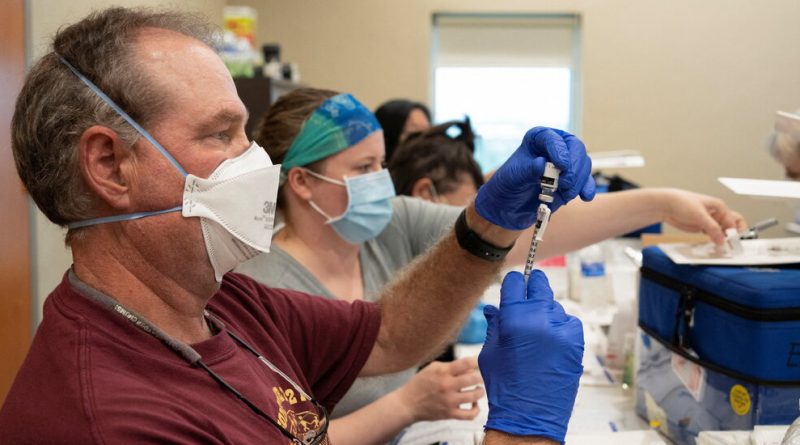Jynneos Vaccine Offers Protection Against Mpox, New Studies Confirm
[ad_1]
Why It Matters: A resurgence is possible.
In the United States, there have been more than 30,000 mpox cases over the last year, with cases declining sharply after last summer’s peak. Mpox cases have fallen off globally, too, and the World Health Organization declared an end to the public health emergency earlier this month.
“But the outbreak is not over, and we need to remain alert and continue our prevention efforts,” Dr. Christopher Braden, the mpox response incident manager at the C.D.C. said at a news briefing on Thursday.
More than 1.2 million doses of the vaccine have been administered in the United States over the last year. But the number of doses administered has declined since last summer, and nationally just 23 percent of people who are considered to be at risk have been fully vaccinated, according to the C.D.C. There are also wide geographic, racial and ethnic disparities in vaccine coverage.
And it is clear that the vaccine is not a silver bullet. In a new cluster of cases recently reported in Chicago, many of the patients were fully vaccinated.
The Chicago Department of Health and the C.D.C. are currently investigating this cluster, which now includes 21 people, all of whom have had mild symptoms, Dr. Demetre Daskalakis, the White House national mpox response deputy coordinator, said at the briefing on Thursday.
“What we do know, however, is that vaccination makes getting and spreading mpox less likely and importantly, may decrease the chances of severe illness, hospitalization and death, even if it doesn’t prevent infection,” he said.
Background: The vaccine was largely unknown.
Jynneos, which is manufactured by a small Danish company, is the safer of the two vaccines available for mpox. It was initially intended to be given as two doses, both injected underneath the skin, 28 days apart.
Because supplies of the vaccine were limited, however, officials deviated from the intended regimen.
Some began administering just a single dose of the vaccine, which some studies had suggested might provide considerable protection. Then, last August, federal officials provided an emergency authorization for intradermal dosing to help stretch the available supply.
But there has been little evidence regarding the effectiveness of these strategies, which were based largely on research findings and not on the real experiences of patients.
What’s Next: Officials prepare a new push for vaccination.
Cases may increase in the coming weeks “as people gather for festivals and other events,” the C.D.C. has warned. Public health experts and officials are urging people who are at risk to get vaccinated before Pride events begin next month.
“For me, the top-line message would be if you haven’t gotten one dose, get it now, because you do need to wait four weeks before you get your second dose,” said Dr. Jacqueline L. Gerhart, the chief medical officer at Epic Research and one of the lead investigators of the N.E.J.M. study.
Additional studies of the vaccine, including research into how well it holds up over time, are currently underway, Dr. Daskalakis said.
Sharon Otterman contributed reporting.
